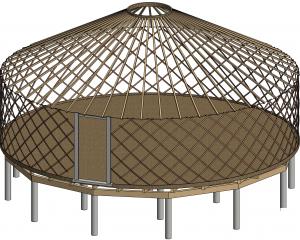QAC announced on Monday it was in discussions with Remarkables Park to buy the land, required to accommodate huge growth forecast for the next 30 years.
Latest figures show more than 2 million passengers a year are likely to be using Queenstown International Airport by 2037, more than four times the present number.
Speaking to the Queenstown Times yesterday, Mr Sanderson said QAC felt "quite comfortable" in the values it was setting to buy the land to the southeast of the airport, which might otherwise have been used for a golf course, reserve land and possible commercial space.
"The key point for airports, we are about long-term planning; we can't act short."
Figures released on Monday showed more than 21,000 annual scheduled aircraft movements were anticipated by 2037. At present, there are 8350.
Passenger numbers were expected to increase from 700,640 to 2,348,139 and non-scheduled passenger movements were expected to quadruple, from 142,418 to 560,650.
However, Mr Sanderson said it was important to bring those numbers "down to basics".
"When you look at those figures annually, its between 4% and 7% [growth each year].
"Over the last five years, we've been dealing with 22% international growth... Last year, it was 16% international growth and 0% domestic growth because of the recession... We can handle [the predicted growth]."
The move to the southeast, rather than the northeast, of the existing airport would be "advantageous to the community", as noise boundaries would be less affected across the Frankton Flats area, he said.
From an operations point of view, expanding to the southeast of the airport meant helicopter and general aviation operators would be more sheltered from weather coming from the northeast.
Furthermore, helicopter, corporate jet and scheduled-flight traffic would all be on the southeast of the runway, so no-one would need to cross it.
In terms of operational requirements, the master plan also contained a condition to have a "heavy taxiway", Mr Sanderson said.
"Currently, if an airliner takes off, it takes about 6 minutes to taxi down and take off.
"There's a point in that growth in the next 30 years where we need that 6 minutes. You can't use the main runway while are planes are taxiing.
"The last thing we want is all the other traffic to cross the runway [during the taxiing process]."
Mr Sanderson said the airport expansions would be "incremental" and would occur as opportunities presented themselves.
As an example, the recent announcement that Patagonia, a specialised chocolate and ice-cream business in the resort, was moving to the airport was part of the master plan, he said.
"In the terminal, we're going to push out the verandas. It's a framework.
"When we have new opportunities - we're currently talking to another retailer at the moment - we know where we're going to fit them all."
Security discussions were ongoing and would see airport security move closer to the "front door", provision for which was also included in the 30-year plan.
In the short term, QAC needed to have its runway end safety area (Resa) constructed under Civil Aviation Authority requirements by October 2011.
Mr Sanderson said QAC had consent for the construction of the safety area and was talking to the airlines about the project, as was required under the Airports Act.
However, those discussions did not involve any form of financial contribution for the $10 million project, which was expected to be paid for in full by QAC, he said.
"We have been taking those things into account in terms of our budget."
Also, in the next 12 months, QAC was looking to open some of the area near the Wakatipu Aero Club, making it available for extra parking and vehicle-rental facilities.
Mr Sanderson said QAC was also expecting an increase in corporate and private jets and had included a fixed base operations terminal, separate from the main terminal, in the master plan.
There was still a plan to install runway lights to assist with night flying, but the present economic situation had delayed it for up to two years.
However, "it's still a live project", he said.











